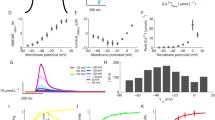Abstract.
Ca2+/calmodulin-dependent protein kinase II (CaMKII) has been suggested to participate in various cellular phenomena triggered by Ca2+ signalling. In the present study, we addressed the functional role of CaMKII in molecular-signal transduction in cells by mathematical modelling of putative biochemical-reaction networks thought to represent an essential part of molecular events responsible for CaMKII-related cellular phenomena. These networks include Ca2+/calmodulin-dependent threonine-286/287 (Thr286/287) autophosphorylation of CaMKII versus dephosphorylation of the enzyme. Computer simulation of the model was performed to examine the relation between the Ca2+-signalling pattern as an input and the resulting degree of Thr286/287 autophosphorylation (m) as an output. Under the simplified condition that the Ca2+ concentration during Ca2+ signalling was set to remain constant with time, the biochemical-reaction networks were shown to function as a switch. There is a threshold for γ, a parameter representing the probability that the Thr286/287-dephosphorylated CaMKII subunit binds with the Ca2+/calmodulin complex; if γ is above this threshold, m increases with time to a large degree (switch-on); otherwise, it remains near zero (switch-off). Mathematically, this sharp onset of m at the threshold can be accounted for by a change in the structure of the dynamic system describing the model, from bistability to monostability; this is analogous to the first-order phase transition in statistical physics. For the oscillatory time course of [Ca2+], switching characteristics were also shown with respect to the frequency and the maximum amplitude of the oscillation. These results suggest that graded information mediated by Ca2+ signalling is digitized into all-or-non information mediated by Thr286/287 autophosphorylation of CaMKII.
Similar content being viewed by others
Author information
Authors and Affiliations
Additional information
Received: 21 May 1998 / Accepted in revised form: 12 May 1999
Rights and permissions
About this article
Cite this article
Okamoto, H., Ichikawa, K. Switching characteristics of a model for biochemical-reaction networks describing autophosphorylation versus dephosphorylation of Ca2+/calmodulin-dependent protein kinase II. Biol Cybern 82, 35–47 (2000). https://doi.org/10.1007/PL00007960
Issue Date:
DOI: https://doi.org/10.1007/PL00007960




